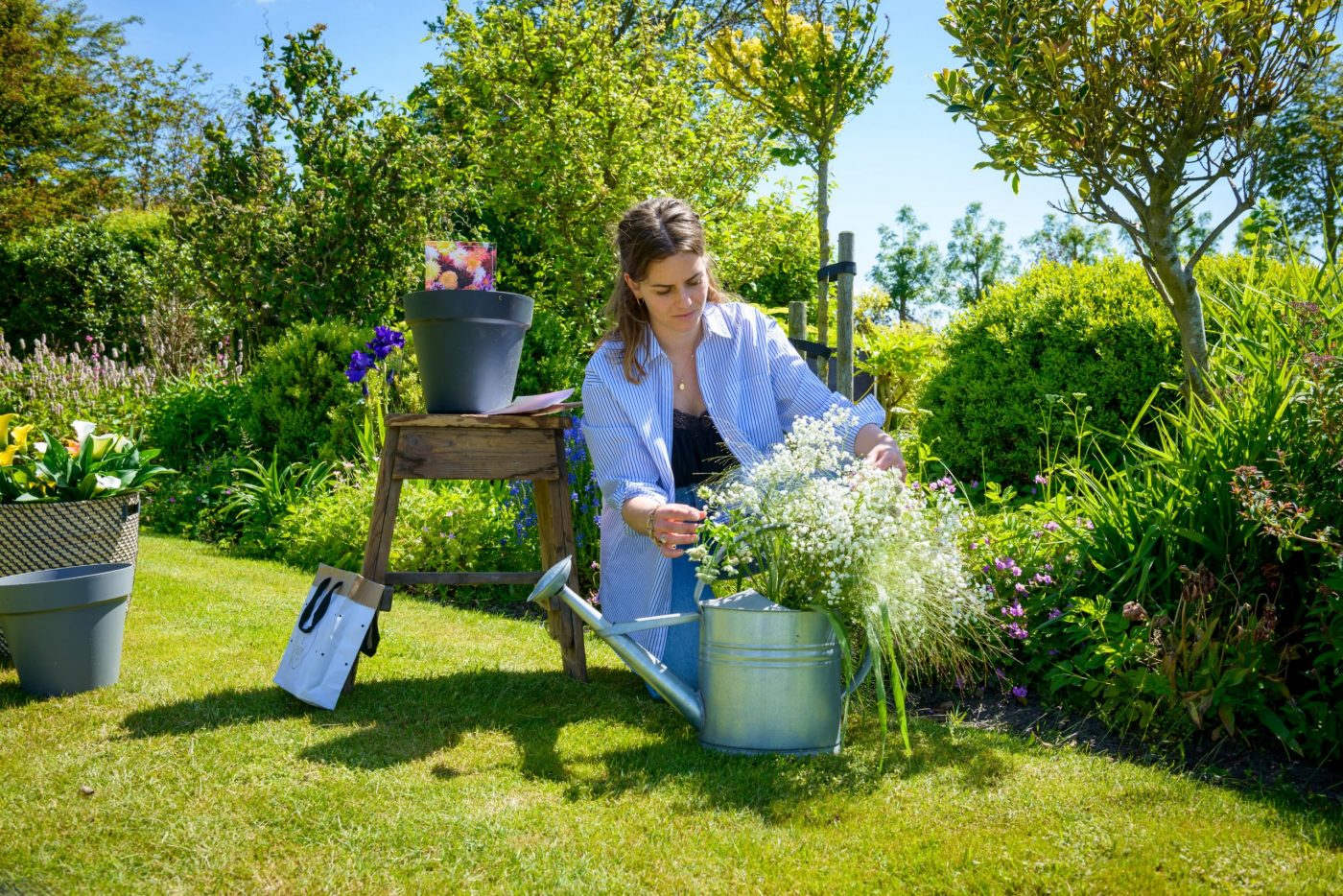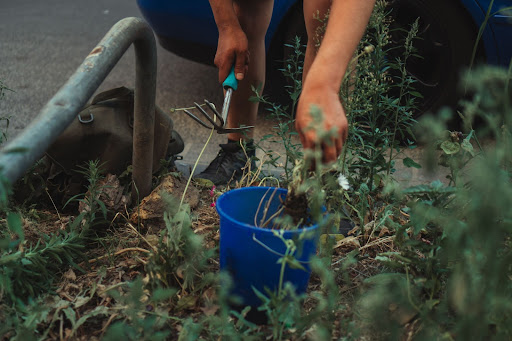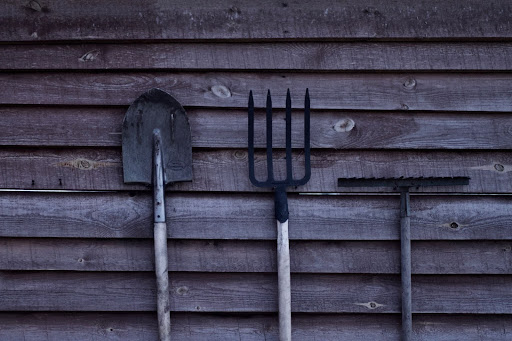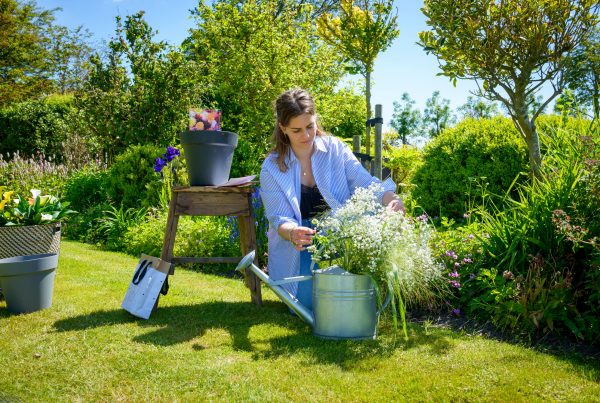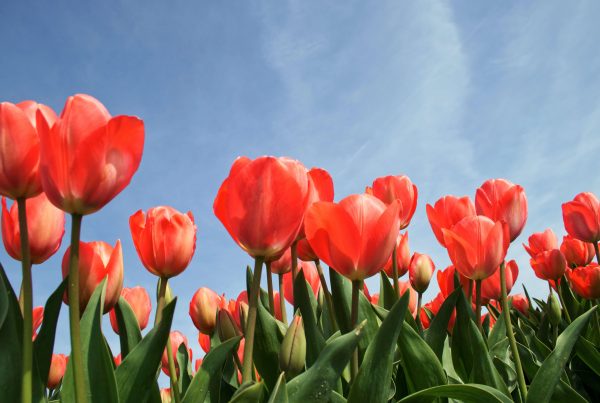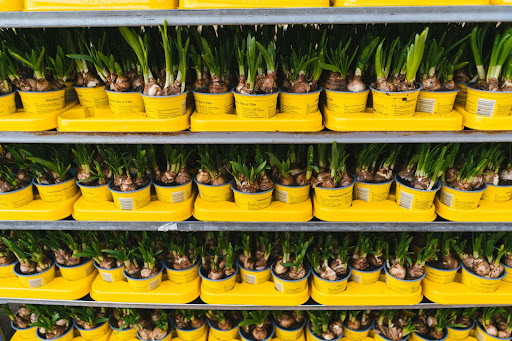Plant & Bloom‘s mission is to spread the joy of gardening and to help people experience the beauty of flower bulbs. We have already given all kinds of tips about flower bulbs and how to care for them. Here are some tips for gardening, especially if you are a beginner. This can help you make a flying start to your garden!
1. What to plant and where
Some gardens are grown wild and free, others are well-kept and meticulously designed. Unless you want a wild garden where you can throw seeds anywhere, you should always start with a game-plan. To begin, think about what you want to grow and where you want to grow it. Herbs and vegetables can be a bit easier to work with than flower bulbs because all they need is a patch of land, water, and some direct sunlight or partial shade. Because of the many varieties of Flower bulbs, care for them can be a different story.
First off, there are so many flowers to choose from. Tulips, chrysanthemums, begonias, pansies, calla lilies, hydrangeas, daffodil (narcissus), fuchsia and petunias; just to name a few. Different kinds of flowers obviously have different needs for soil, sunlight and water. Furthermore, there are different blooming times (annuals versus perennials), heights, shapes, and of course, colors. All of these characteristics have an impact on how you might want to design your garden, so be careful to keep them in mind.
Second, choose a location. Preferably one that is close to home and has healthy amounts of sunlight. Watch out for low areas where frost is likely to settle – “frost pockets” – and high wind areas. Don’t focus too much on land space; you can still enjoy flower bulbs and other plants even if you don’t have a dedicated garden. For instance, you can use your balcony or porch! Once you have a space, investigate what hardiness zone you are in and conclude when the first and last frost might be. The frost dates are very important because you might ruin your flower bulbs if you plant before them.
2. Plan & Design
You are going to have to put in the work if you want to create your dream garden. So plan and design it all; the location of the garden beds and especially when you’ll be planting the flower bulbs. Just because the bulb is small does not mean that the flower will be too. Keep this in mind when planning your garden beds, because when you’re planting and tending to your garden, you do not want to step on the bulbs or compact the ground. So start by making sure that each bulb has enough space to grow.
Garden or flower beds come in all kinds of shapes and sizes. Rectangular and square are the most common shapes for garden beds, but the real limit is your imagination. You can make them round, star shaped, triangle or oval. Within the garden beds you can choose to plant the bulbs in blocks or in rows. Then you’ll have to think about what kind of garden bed is best for your flower bulbs. Such as a raised or a lowered bed. A raised bed looks appealing and is fairly easy to work with, but is also closer to the sun and tends to dry out quickly. A ground-level bed, on the other hand, can be used to retain moisture in dry areas. Whichever you choose, make sure the beds are small enough that you can reach the center from either side – so you won’t trample the flowers when planting or maintaining the garden.
3. Soil & Compost are your gardens friend
To plant a successful garden you’ll have to take a moment to look at your soil and compost. These are the nutrient supply and also determine the stability and drainage of your garden. Good soil is the solution to healthy and blooming plants. To achieve the best results for flower bulbs you should start with well-drained, almost sandlike loam. After that you can add organic matter, as much as your garden needs. Furthermore, compost, well-aged manure, or even leaf mold will help your soil to drain water and hold moisture. This is because it has a sponge-like ability. Avoid fresh manure, as they can contain pathogens which can be dangerous for your roots.
4. You really need tools
We’re not saying it is impossible to maintain your garden with your hands, but tools make it so much easier. To enjoy gardening to the fullest, you should invest in some basic garden tools. This way tending to your garden goes from ‘a chore’ to ‘your favorite activity’!
Invest in sturdy gardening tools instead of cheap plastic ones. The plastic tools easily break and won’t give you the support you need while being in your garden. Support your local businesses and take a trip to a garden center near you. You can also find tools at estate sales for bargains, look on Amazon, or make a stop at Home Depot or Toolbarn. Tools that are a must in any garden are a:
- Garden hoe
- Dirt rake
- Scuffle hoe
- Leaf rake
- Hand tools
- Garden shovel
- Water hose or watering pot
5. Nurture, maintain and enjoy your garden
Let’s be honest, you did not do all of the work mentioned above to leave it the way it is. Ultimately you want to see the beautiful results. We cannot emphasize this enough, to achieve a luscious garden you have to work, work, work. First off, you’ll have to take the time and enough of it to tend to your garden. A garden needs lots of attention, go look at flowers at a flower store or farm if you can’t spare the time and work investment. The time varies due to the size of your garden. If you have half an acre it may take a couple days a week, whereas if you have a balcony it might be just a few minutes a day.
This time is dearly needed to remove the weeds, check up on the soil, and water your garden. To nip the weeds in the bud, you can use a scuffle hoe, which was mentioned in the tools section. Use shears to remove unsightly and unhelpful vegetation. With a water hose or watering can you provide your garden with the much needed water. In regions with a lot of heat waves a drip irrigation system would be even better. A beginning gardener does not want to have to haul gallons of water to those thirsty flowers when it’s hot right? Still, a garden hose or watering can does just fine. Be aware of over- or underwatering. Both can do some serious damage to your garden. Generally, your flowers need about one inch of water per week during the blooming season. Too little water and your flowers will dry out and wilt, yet too much water and the roots will drown and start to rot. So be aware!
And last but not least, do not forget to enjoy your garden, the benefits that gardening brings to your health and eventually the beautiful result. Once the blooming season is over you can start planning your garden again and enjoy the process all over again.
Same as these tips for gardening, Plant & Bloom wishes to help any DIY gardener. With our award winning flower bulbs, such as the Triumph Tulip, we wish to spread the joy of gardening!


